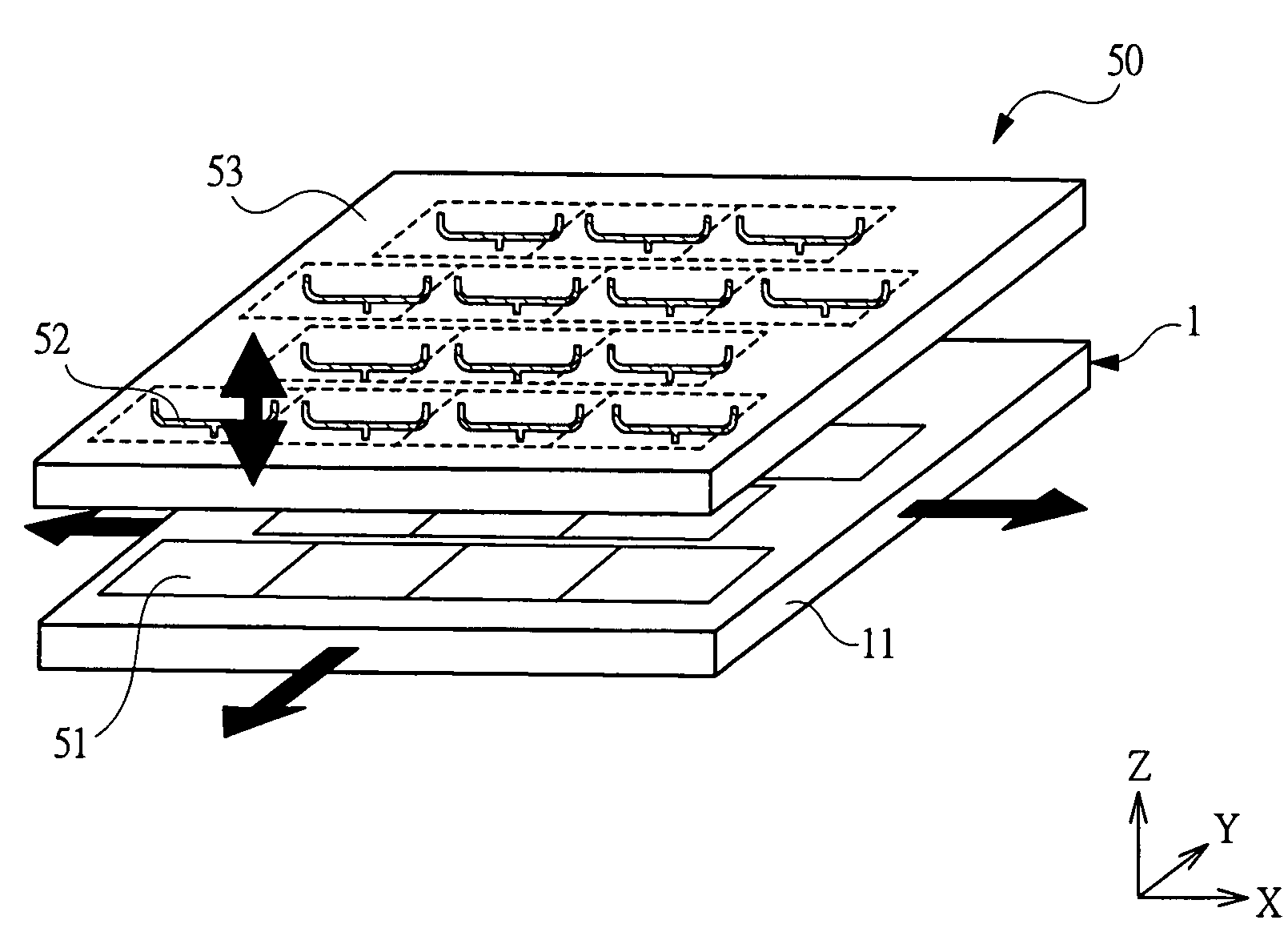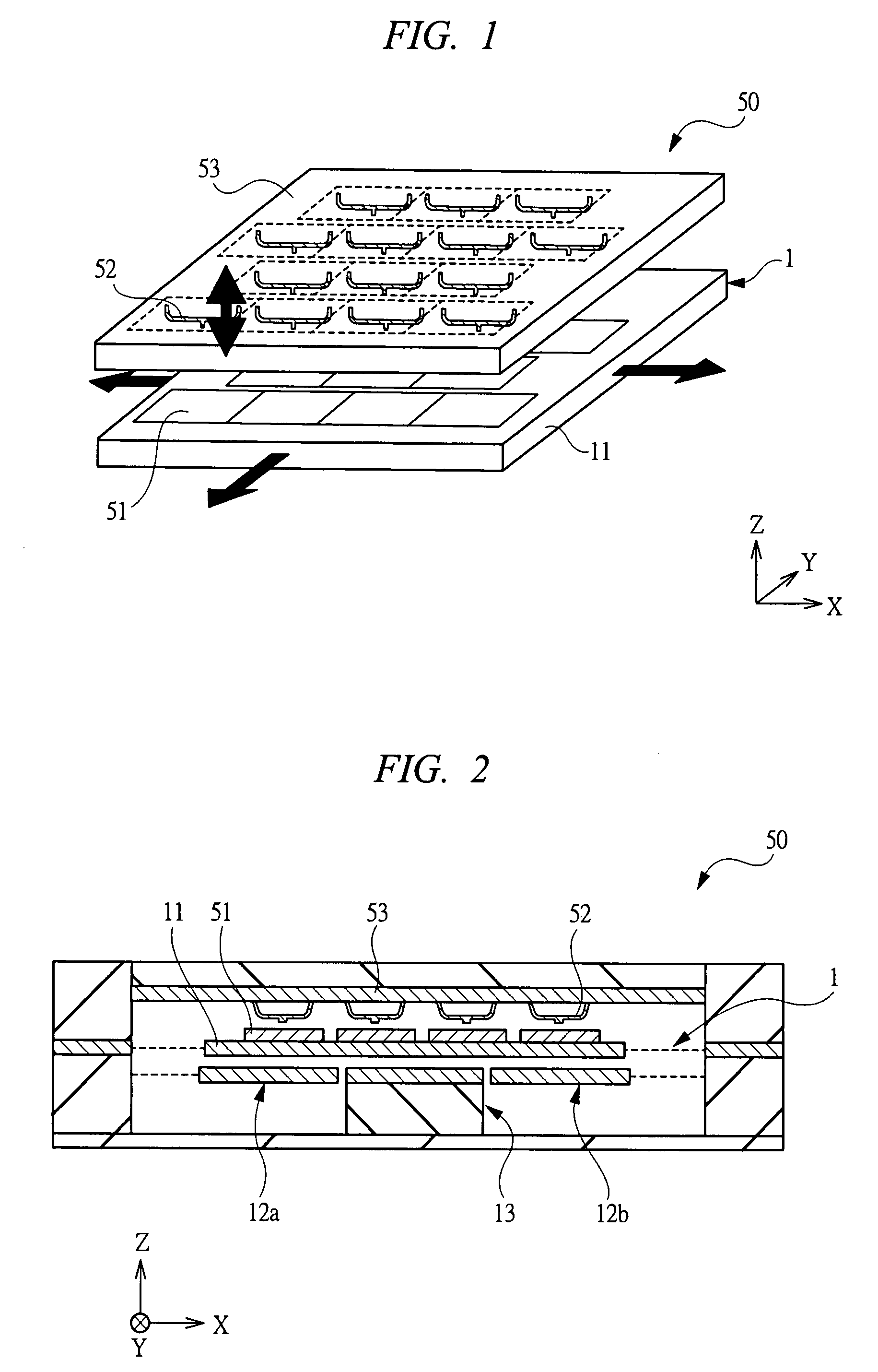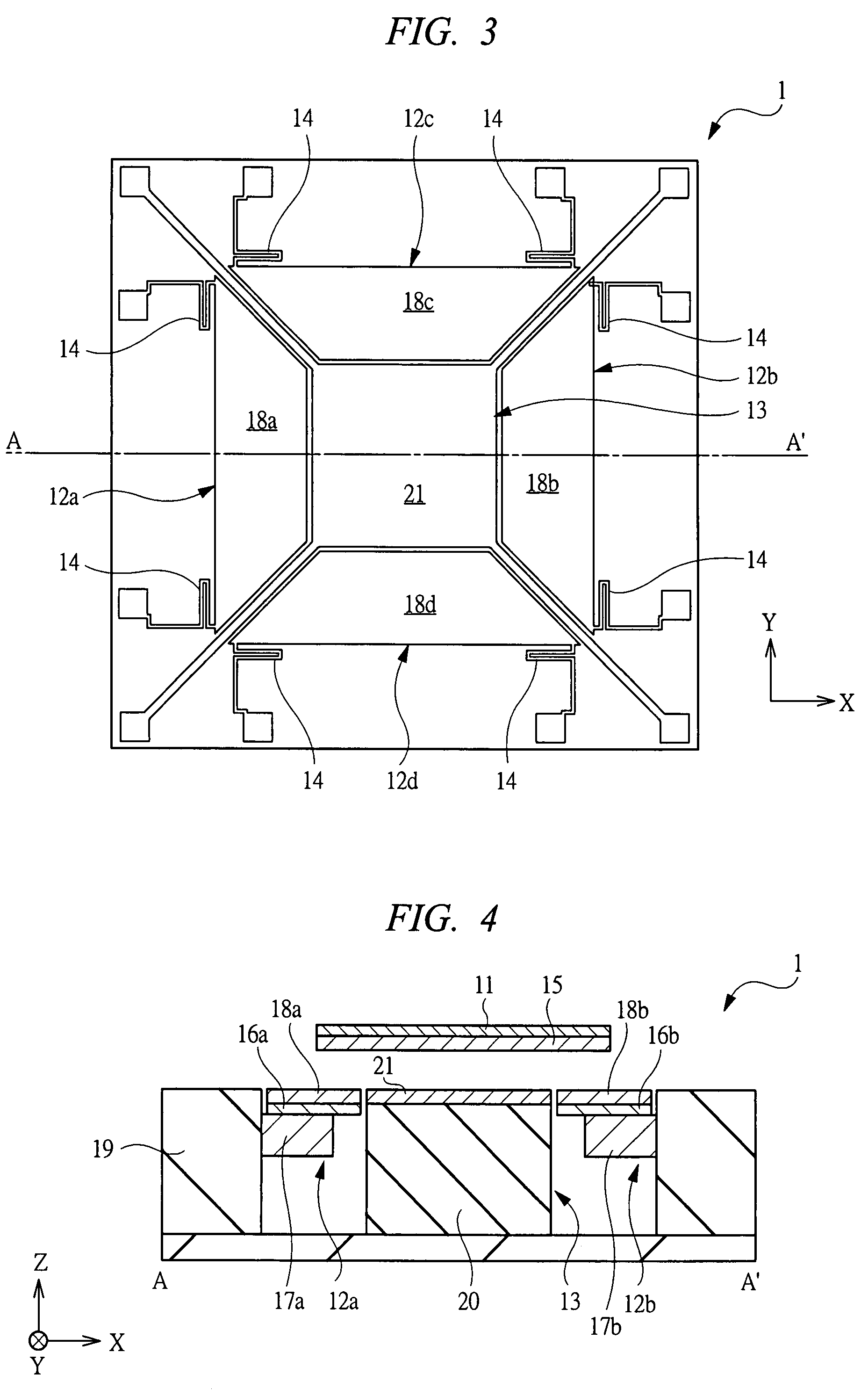Actuator system
a technology of actuators and actuators, applied in the field of actuator systems, can solve the problems of not being able to accurately control, not being able to use electromagnetic driving schemes, and not being able to achieve high-speed operation, and reducing the size of piezoelectric elements 117, achieving precise system operation, and reducing the amount of movement for one cycle
- Summary
- Abstract
- Description
- Claims
- Application Information
AI Technical Summary
Benefits of technology
Problems solved by technology
Method used
Image
Examples
first embodiment
[0074]First, a configuration of a probe memory including an actuator system of piezoelectric driving-electrostatic adsorption type (hereinafter referred to as an actuator) according to a first embodiment of the present invention is described using FIGS. 1 and 2. FIG. 1 is a perspective diagram of a probe memory 50 including an actuator 1 according to the first embodiment. FIG. 2 is a cross-sectional diagram of the probe memory 50 of FIG. 1 sectioned at a center position. Note that, in FIG. 2, for ease of description, a carrier stage 11 is shown as being separated from driving units 12a, 12b and a holding unit 13. In practice, however, the carrier stage 11 is provided so as to make contact with the driving units 12a, 12b and the holding unit 13.
[0075]The probe memory 50 is provided with a plurality of probes 52 including one or more small probes (probe chips) for performing information writing to or information reading from a recording medium 51, a first substrate 53 having a signal ...
second embodiment
[0118]In the first embodiment, the case has been described in which the actuator system of the piezoelectric driving-electrostatic adsorption type includes the holding unit provided with the holding electrode in the mechanism of driving the carrier stage having the recording medium mounted thereon in the X-Y axes directions. However, in a second embodiment, a case in which the holding unit is not included is described.
[0119]A configuration of an actuator system of the piezoelectric driving-electrostatic adsorption type (hereinafter referred to as an actuator) according to the second embodiment is described using FIGS. 13 and 14. FIG. 13 is a plan diagram of an actuator 2 according to the second embodiment. FIG. 14 is a cross-sectional diagram along a B-B′ line in FIG. 13. Note that, in FIG. 13, although a carrier stage 11 is omitted, the carrier stage 11 has a rectangular shape in a plan-view shape of X-Y plane, as shown in FIG. 1. And, in FIG. 14, for ease of description, the carri...
third embodiment
[0153]An actuator system of the piezoelectric driving-electrostatic adsorption type (hereinafter referred to as an actuator) according to a third embodiment of the present invention is described using FIGS. 17, 18A, and 18B. FIG. 17 is a cross-sectional diagram of a main part of an actuator according to the third embodiment. FIGS. 18A and 18B are timing charts of control signals of the actuator of FIG. 17. FIG. 18A shows control signals for a driving system, whilst FIG. 18B is shows a control signal for a carrying system. Note that, in FIG. 17 for ease of description, a carrier stage 11 is shown as being separated from driving units 12a, 12b and a holding unit 13. In practice, however, the carrier stage 11 is provided so as to make contact with the driving units 12a, 12b and the holding unit 13.
[0154]As shown in FIG. 17, the actuator 3 according to the third embodiment includes the carrier stage 11 composed of a substrate moving in biaxial directions (X-Y axes directions), the first...
PUM
 Login to View More
Login to View More Abstract
Description
Claims
Application Information
 Login to View More
Login to View More - R&D
- Intellectual Property
- Life Sciences
- Materials
- Tech Scout
- Unparalleled Data Quality
- Higher Quality Content
- 60% Fewer Hallucinations
Browse by: Latest US Patents, China's latest patents, Technical Efficacy Thesaurus, Application Domain, Technology Topic, Popular Technical Reports.
© 2025 PatSnap. All rights reserved.Legal|Privacy policy|Modern Slavery Act Transparency Statement|Sitemap|About US| Contact US: help@patsnap.com



